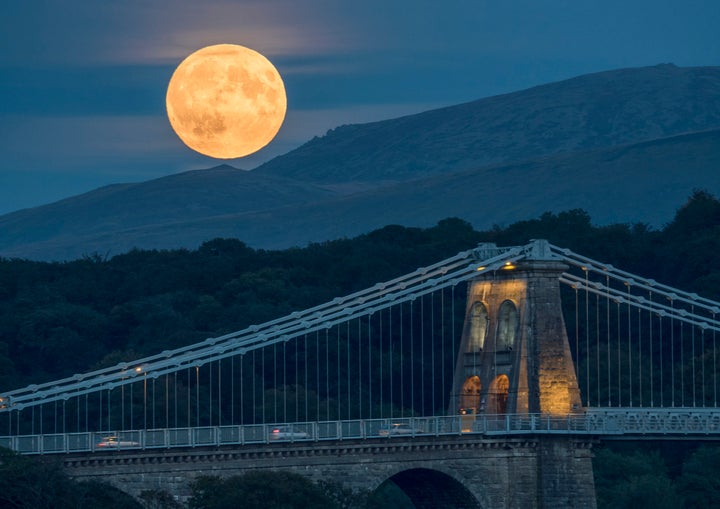Now we all have the 14 November in our diary, we want to know how to make the most of the rare supermoon.
Because despite the moon appearing 14% bigger and 30% brighter than your average moon, that doesn’t mean it will be easy to guarantee a perfect picture.
Now UK Astrophotographer Andrew Whyte, and Sony, have shared top tips for capturing that Instagram-worthy snap (and getting all the likes).

Do your homework.
Before you leave the house, make sure you’ve prepared and know what you want to get from your photograph, Whyte says: “Information about moonrise times and positions are all readily available online [and on apps] and can be cross referenced with maps to help confirm if the shot you are seeking is possible.
Include a landmark.
All the best supermoon photos feature an element of perspective, whether that be a building or a person: “Try to include a landmark feature in your image but make sure there is nothing in the background that can obstruct your view of the moon - tall buildings, for instance, or in more rural settings, a copse of trees or distant hilltops.”
Keep it steady.
This one is especially difficult if the temperature is reaching sub-zero, but keep your camera steady: “Anything that causes the camera to vibrate can lead to a loss of sharp detail in the final image. It’s particularly important on camera like the ones I use (the Sony α7R II & 70-200 GM) which combines very high resolution and incredible optical resolving power. A solid tripod and cable release helps to minimise such potential for movement.”
And wear gloves.
Change it up.
Don’t just let the automatic settings do all the work: “For consistent results you need to instruct the camera on which settings to apply. I prefer to shoot in manual but shutter priority can also be used- these can be found respectively in the M and S positions on the camera dial. In either case, it’s important that you tell the camera what shutter speed to apply, then adjust brightness using ISO,” says Whyte.
Know your shutter speed.
You might not consider yourself much of a professional photographer, but if you’re going to pay attention to one thing, make it your shutter speed (especially in the low light).
“Traditional advice is to select a shutter speed that’s numerically the same (or higher) than your lens length- so > 1/200 sec for a focal length of 200mm or > 1/400 for 400mm etc. This helps avoid any further movement exaggerated by the longer lens,” says Whyte.
Shoot, shoot, shoot.
“Even the best-framed photo can be interrupted for better- or worse. From an inopportune passer-by in the foreground to a well-timed bird or plane in front of the moon- take a few photos in quick succession for each composition. But watch ahead for anything entering or leaving the frame, as some ‘lucky’ shots are really the product of the photographer’s vision and anticipation.”
Pull an all-nighter.
Whyte says that the longer you stay out, the better you chances of nailing the perfect shot: “As the moon rises higher and the sky darkens, so arrives the chance to change your shooting style, for instance by silhouetting different subjects against the moon’s bright surface. Look for interesting forms in tree branches, or wildlife on a hillside. If you’re with friends, ask them to pose in front of the lens and frame them in front of the moon.”
